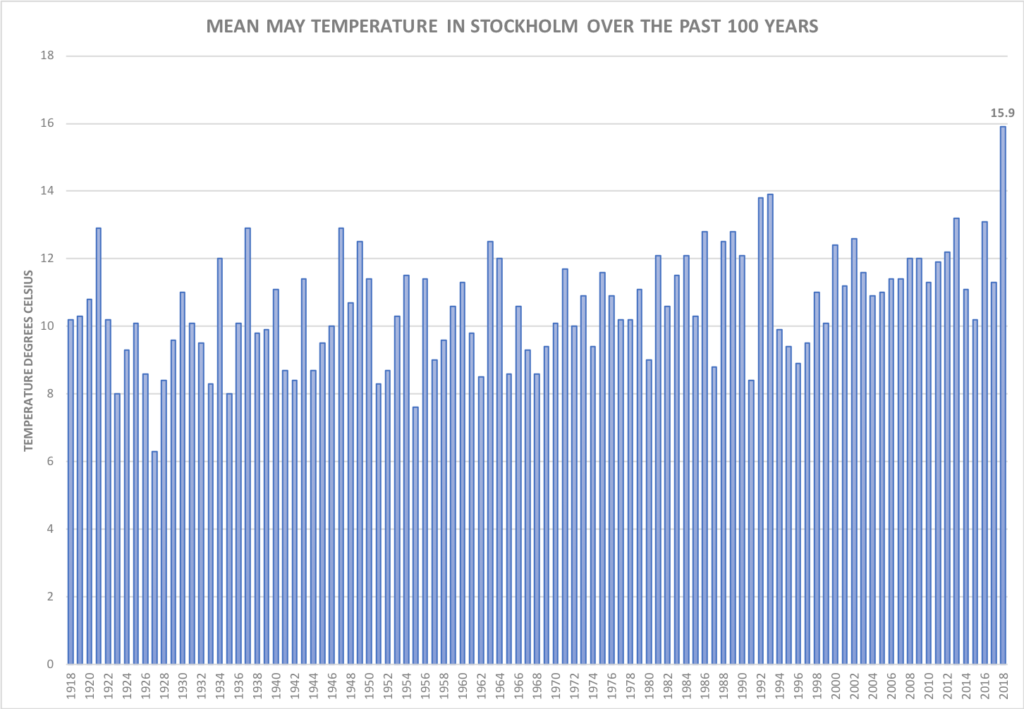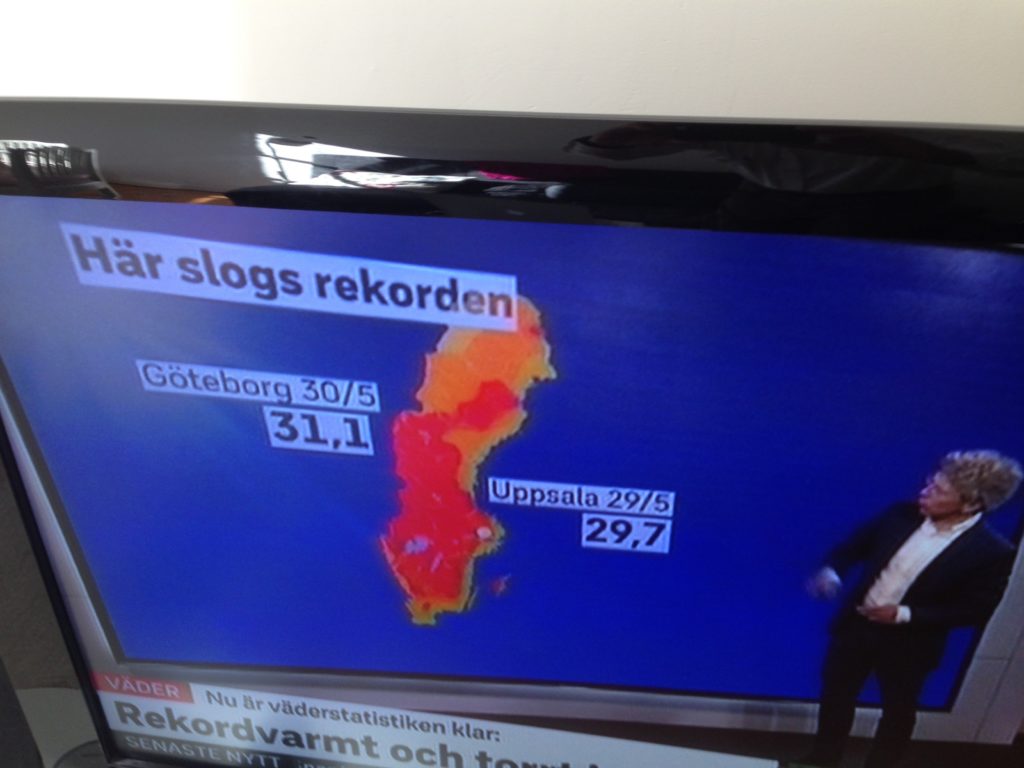This far north land of ice hockey, ABBA, Nobel Prizes, and long, cold winter nights is now reeling under Australia-like heat, blazing sunshine and forest fire threats, and it isn’t even summer yet!
Just a couple of months earlier, Sweden was hit by unusually cold weather and heavy snow falls that later resulted in widespread flooding across the country. This isn’t ‘just’ climate change; this is climate disruption, a term introduced by John Holdren, science adviser to former US president Barack Obama.
Twenty years ago, I moved to Sweden to head up an international research program on global change, and, after returning to Australia seven years later, I have regularly returned to Stockholm for periods of work with colleagues. My last two visits have been remarkable.
Just two months ago, in mid-March, Brunnsviken, a lake just north of central Stockholm, was frozen and covered with snow. Tracks criss-crossed the ice as people used the frozen lake as a short-cut to walk to work. Now, a couple of months later, people are sprawled across the rocks at the lake’s edge in their swimmers, soaking in the bright sunshine in near-30 degree heat. In between, massive flooding hit the country as the late snow met the early heat. I’ve never seen anything close to this in 20 years.
Personal anecdotes and observations can often be misleading, but the unusual nature of the bizarre weather in Sweden I’ve seen over the past few months is backed up by long-term climate records, some of the longest and most reliable in the world (the universal temperature scale in “degrees Celsius”, or degrees C, is named after Swedish scientist Anders Celsius).
The month of May was easily the hottest May ever recorded in Sweden. In Stockholm the previous record was smashed by about 2°C, a huge margin by any standards. For much of the month, daily temperatures were 5-6°C above average over much of the country, and the maxima were sometimes a good deal above that. On 16 May, Stockholm recorded a maximum of 28.5°C, the highest temperature ever recorded that early in May for Sweden’s capital city, and measurements go back to the beginning of the 1700s.
The strange May weather hasn’t ended with heat. Much of the country has also suffered extreme drought. Many areas barely reached 20% of the normal rainfall for the month. With no rain in sight for the early days of June and concern that dry conditions will continue further into summer, some locations in Sweden are facing the unthinkable – water restrictions. Droughts, heat and water restrictions are not unusual in Australia, but in this land of lakes, rivers and normally long periods of cloud and rain, restricting the use of water is very un-Swedish.
The combination of drought and heat is bringing to Sweden something that is increasingly familiar to Australians – the threat of severe wildfires. With much of the country covered in forest, Sweden has seen forest fires before. But the extent of the threat this time is striking.
The Swedish Meteorological and Hydrological Institute (SMHI) issues two types of warnings for forest fires – risk of fire ignition and the risk of fire spread. The risk for fires starting is currently greatest in the southern third of the country, but the risk of spread, once a fire is started, covers a much greater area. On 31 May, over two-thirds of the entire country was assessed to be at high risk of a spreading fire, should one be ignited. Even for Australians, that is impressive!
Sweden is not the only country in Europe, or indeed the Northern Hemisphere, that has been afflicted with wild swings in weather. The Arctic region is warming at more than twice the global average, reducing the temperature difference between the equator and the north pole, which, in turn, destabilises the jet stream – the circumpolar atmospheric circulation system that keeps cold air to the north and warm air to the south (see the Climate Council Factsheet: Climate Change and Record Arctic Winter Warmth).
The wild climatic swings I’ve experienced in Sweden recently are just the latest example of climate change-driven destabilisation of the Northern Hemisphere climate. Earlier in the year, while the Arctic experienced temperatures a phenomenal 30°C above average (yes, you read that correctly, 30, not 3°C above average), snow was falling over Rome.
There is a clear message here. ‘Climate change’ is far more complex and dangerous than a simple ‘change’ to the climate that we’ve built contemporary societies around, and to which the natural world has been adapted for thousands of years.
Stockholm’s apartment blocks and commercial buildings are solid, tight and well insulated, built for keeping the cold out. They are not built for long periods of days with 20 hours of bright sunlight and 30-degree heat. Nor are Sweden’s forests adapted to severe drought and soaring temperatures.
Sweden, however, has recognised that it must do its part in getting its greenhouse pollution down rapidly. Its emissions have been dropping for many years, in large part because of a US$100 per tonne carbon dioxide tax that Swedes are considering to raise to US$200 per tonne. There is strong support for improved public transport in the cities, as well as cycling and walking. There is government support for increasing the biogas industry to replace fossil fuels.
Australians are increasingly suffering from increases in the intensity and frequency of extreme weather events. The Great Barrier Reef, one of the globe’s most iconic ecosystems known and valued the world over, is on its knees and headed for virtually complete destruction if global greenhouse pollutions levels aren’t decreased rapidly and deeply. Yet Australia’s greenhouse pollution has actually been rising for the last three years.
Climate change – or rather, climate disruption – is truly a global problem. It’s urgent that Australia join Sweden and other developed countries in doing our fair share to tackle this rapidly escalating problem.
FIGURE 1. Extreme heat in Sweden. Stockholm broke its record for average May temperature by 2°C.
FIGURE 2. Records were broken for the highest maximum temperature in May in Göteborg (Gothenburg), Sweden’s second largest city, and in Uppsala, the university town just north of Stockholm. SVT (Swedish National Television) news report, 31 May 2018.

